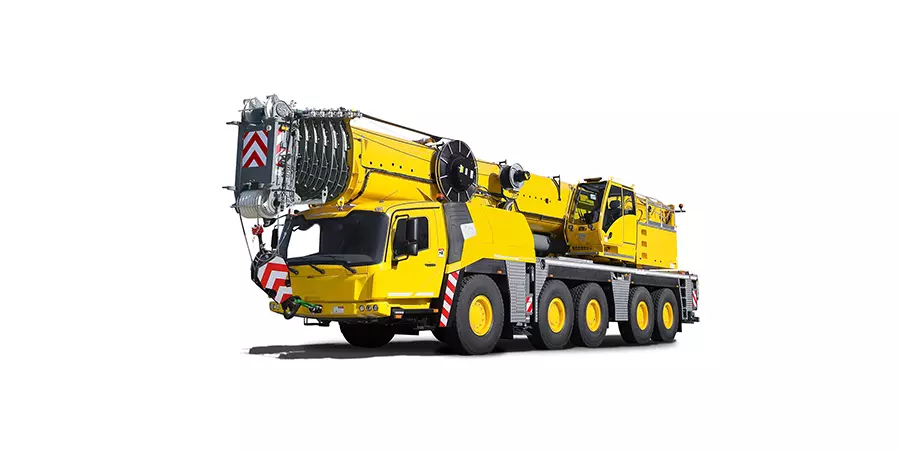Markets

Mobile cranes rely on hydraulic systems to perform critical functions like lifting, stabilization, movement, and control. Below is a detailed list of hydraulic products used in mobile cranes, categorized by their roles:
1. Hydraulic Pumps
Function: Convert mechanical energy (from the crane’s engine) into hydraulic pressure.
Types:
Axial Piston Pumps (variable displacement): Adjust flow/pressure based on load demands (most common in modern cranes).
Gear Pumps: Provide steady flow for auxiliary systems (e.g., cooling, steering).
Example: Bosch Rexroth or Parker Hannifin pumps powering boom extension and winches.
2. Hydraulic Motors
Function: Convert hydraulic pressure into rotational motion.
Types:
Radial Piston Motors: High torque for slewing (rotating the crane’s upper structure).
Axial Piston Motors: High-speed power for winches (hoisting/lowering loads).
Travel Motors: Drive wheels in mobile cranes (common in all-terrain models).
Example: Sauer-Danfoss motors driving the slewing ring or cable drum.
3. Hydraulic Cylinders
Function: Generate linear force for movement and stabilization.
Types:
Telescopic Cylinders: Extend/retract the multi-section boom.
Outrigger Cylinders: Deploy stabilizers to balance the crane.
Jib Cylinders: Adjust the angle/length of the auxiliary boom.
Example: Double-acting cylinders with hardened steel rods for durability.
4. Hydraulic Valves
Function: Control fluid flow, pressure, and direction.
Types:
Directional Control Valves (spool valves): Direct fluid to actuators (e.g., boom, winch).
Proportional Valves: Enable precise, variable-speed control (e.g., fine load positioning).
Pressure Relief Valves: Prevent system overload by releasing excess pressure.
Counterbalance Valves: Safeguard against uncontrolled movements (e.g., boom drop).
Example: Sun Hydraulics valves for load-sensing systems.
5. Hydraulic Accumulators
Function: Store pressurized fluid to absorb shocks, smooth operations, or provide emergency power.
Types:
Bladder Accumulators: Common for emergency boom retraction.
Piston Accumulators: Handle high-pressure surges.
6. Fluid Management Components
Hydraulic Hoses/Fittings: High-pressure, flexible hoses (e.g., steel-braided) with leak-proof couplings.
Filters: Remove contaminants from fluid (suction, pressure, or return-line filters).
Reservoirs: Store and cool hydraulic fluid.
Heat Exchangers: Maintain optimal fluid temperature during prolonged use.
7. Safety & Monitoring Systems
Load-Sensing Valves: Adjust pump output to match load weight, preventing overloads.
Pressure Sensors/Gauges: Monitor real-time system pressure.
Temperature Sensors: Alert operators to overheating risks.
8. Specialized Hydraulic Systems
Electro-Hydraulic Controls: Combine electronics (PLCs, joysticks) with hydraulics for precision.
Counterweight Systems: Hydraulically adjustable weights for load balancing.
Steering/Braking Systems: Hydraulic power steering and disc brakes for crane mobility.
Key Applications
Boom Operation: Telescopic cylinders + axial piston pumps for extension/retraction.
Slewing: Radial piston motor + directional valves for 360° rotation.
Winches: Axial piston motor + counterbalance valves for safe load handling.
Stabilization: Outrigger cylinders + pressure relief valves for balance.
Why Hydraulics?
High Power Density: Small components generate immense force (e.g., lifting 1,000+ tons).
Precision: Proportional valves enable millimeter-level accuracy.
Durability: Built to withstand harsh environments (dust, temperature extremes).
Modern mobile cranes integrate these components into a cohesive system, ensuring safety, efficiency, and precision in construction, industrial, and infrastructure projects.
